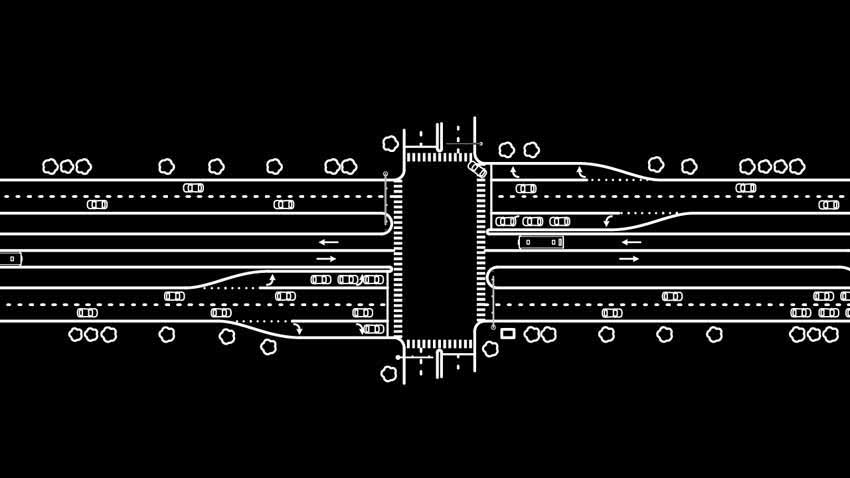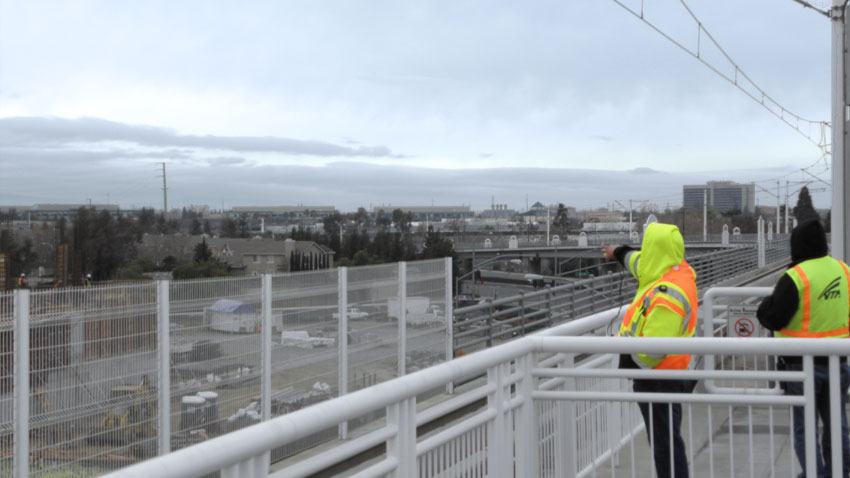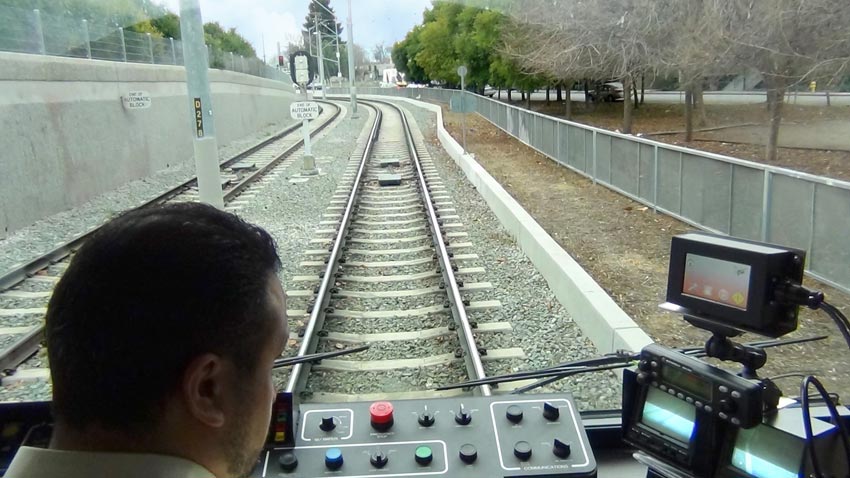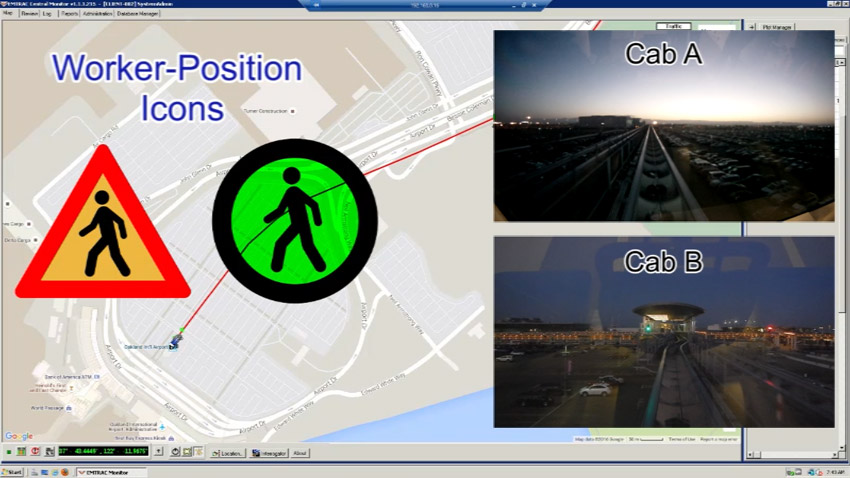EMTRAC Detection & Signaling Apps
The EMTRAC detection apps provide a secure way for traffic departments to offer the benefits of a connected city—delivering smart city services through an accessible and secure communications environment. For additional information, refer to the Bicycle and Motorcycle Detection page and the Pedestrian Detection and Signaling page—or contact us.
EMTRAC Bicycle Detection App
The EMTRAC Bicycle Detection app enables traffic controllers to accurately detect bicycles (as well as motorcycles) at equipped intersections. The app, which runs on the rider’s mobile device, utilizes the EMTRAC detector to notify corresponding traffic controllers so they serve the appropriate phases for the given directions.
The EMTRAC system eliminates the need for embedded loops in the roadway and reduces the need for other wayside detection equipment. The Bicycle-Detection System utilizes geographic detection zones (shown in blue), which prompt traffic detection only when pre-defined conditions are met (such as position, speed, and direction).
Intersection communication can be provided through a variety of means including NTCIP or with an EMTRAC Priority Detector (the same as used for EMTRAC TSP/EVP and other functions). Detectors are compatible with all major controller cabinets (NEMA, 170/2070, CalTrans, ITS, and custom cabinets).
Please contact us for additional information—and to learn how other traffic departments are currently using the EMTRAC Bicycle Detection system.

EMTRAC Pedestrian Detection App
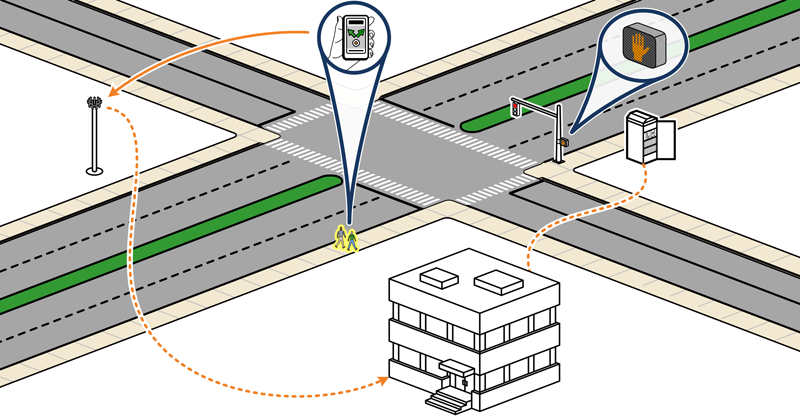
The EMTRAC Pedestrian Detection app serves as both a Accessible Pedestrian Signal Detector (APSD) and an auxiliary Accessible Pedestrian Signal (APS) where the pedestrian carries the sensing device and equipped intersection controllers receive the phasing request for the selected direction.
The Pedestrian Detection app also serves as an auxiliary aid and service to enable people with vision, hearing, or mobility impairments to recognize pedestrian signals and request crossing signals from their mobile device. When pre-defined conditions are met (such as position, speed, and travel direction), the app sends the appropriate crossing-signal request to the intersection or central operations center.
The Pedestrian Detection app provides signal information through audible tones and vibrating surface, as well as through visual indicators on the device screen—synchronous with installed pedestrian signal heads. When available from the traffic controller, the app may also bet configured to provide a pedestrian countdown timer through audible, vibratory, and visual indicators.
Because the EMTRAC system communication is handled through a variety of protocols and means (such as NTCIP, FHSS radio, cellular, DSRC, SDLC, and others) the Pedestrian Detection app is compatible with both isolated and coordinated signal systems.
For non-centralized systems, the EMTRAC Priority Detector is installed in control cabinets to provide a wide range of detection data to the traffic controller. This is the same component that detects signal-priority requests from transit and first-response vehicles.
As pedestrian fatalities continue to make up a larger share of overall traffic fatalities, traffic departments face an increasing call to help reduce these casualties. Please contact us for more information about how the EMTRAC system can help improve pedestrian safety in your city.
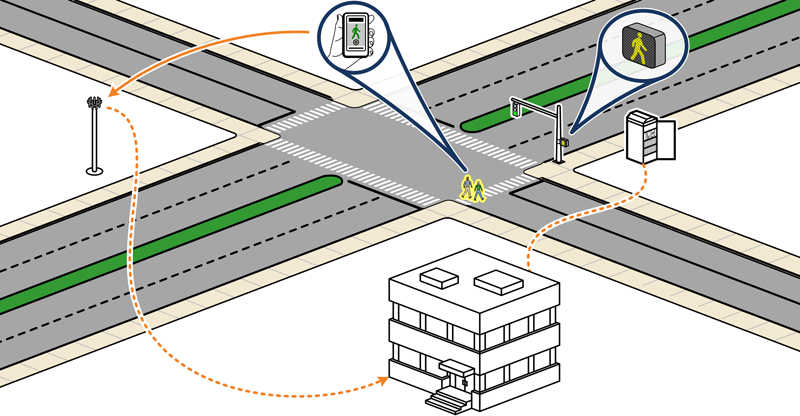
EMTRAC Videos
EMTRAC System video demonstrations of EMTRAC System capabilities, including Emergency Vehicle Preemption (EVP), Transit Signal Priority (TSP), transit rail safety, vehicle detection, and signal management.

